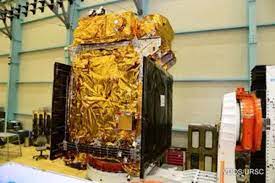Aditya-L1 Mission : Reached The Spaceport In Sriharikot

India’s first solar mission, Aditya-L1, has recently reached the spaceport in Sriharikota.
- Aditya-L1 Mission is the first space-based Indian mission to study the Sun.
- It will be launched by the PSLV-XL launch vehicle.
- The spacecraft shall be placed in a halo orbit around the Lagrange point 1 (L1) of the Sun-Earth system, which is about 1.5 million km from the Earth.
- A satellite placed in the halo orbit around the L1 point has the major advantage of continuously viewing the Sun without any occultation/eclipses.
- This will provide a greater advantage in observing solar activities and their effect on space weather in real-time.
- The spacecraft carries seven payloads to observe the photosphere, chromosphere and the outermost layers of the Sun (the corona) using electromagnetic and particle and magnetic field detectors.
- Using the special vantage point L1, four payloads directly view the Sun and the remaining three payloads carry out in-situ studies of particles and fields at the Lagrange point L1, thus providing important scientific studies of the propagator effect of solar dynamics in the interplanetary medium.
- The other objectives of Aditya L1 mission will be to understand the drivers for space weather (origin, composition and dynamics of solar wind), and identify the sequence of processes that occur at multiple layers (chromosphere, base and extended corona) which eventually leads to solar eruptive events.
Lagrangian points:
- It is also known as Lagrange points or liberation points, are specific locations in space where the gravitational forces of two large bodies, such as a planet and its moon or a planet and the Sun, produce enhanced regions of gravitational equilibrium.




